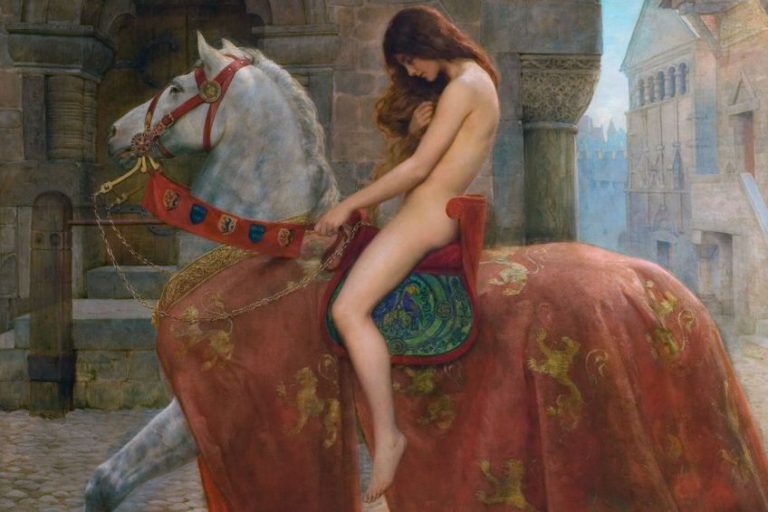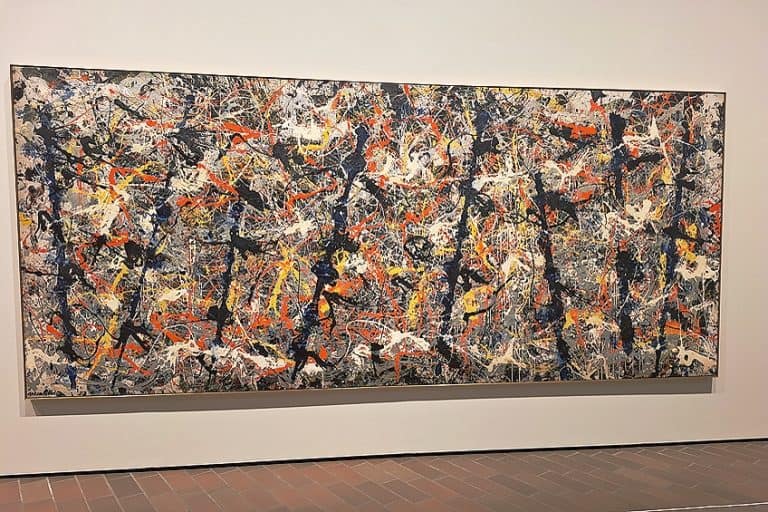“Triple Self-Portrait” by Norman Rockwell – A Witty Introspection
Norman Rockwell’s Triple Self-Portrait is a masterful and iconic piece that encapsulates the artist’s unique blend of humor, technical skill, and introspective creativity. Created in 1960 for the cover of The Saturday Evening Post, this painting depicts Rockwell himself in the act of creating a self-portrait, surrounded by sketches of his artistic influences and inspirations. The work is a brilliant study in self-reflection, featuring three different perspectives of the artist: his real self, his reflection in a mirror, and his depiction on the canvas. Through this clever composition, Rockwell invites viewers to explore the complex relationship between the artist’s identity and his public persona, all while showcasing his signature attention to detail and narrative storytelling.
Key Takeaways
- Triple Self-Portrait conveys Rockwell’s wit and reflects on the artistic self.
- Rockwell’s piece contributes to the tradition of self-portraiture while offering commentary on personal and professional identity.
- The artwork’s enduring fame underscores its significance in American art and culture.
Historical Context
| Artist | Norman Rockwell (1894 – 1978) |
| Date Created | 1960 |
| Medium | Oil on canvas |
| Genre | Portrait, Illustration |
| Period/Movement | American Realism |
| Dimensions (cm) | 88 x 113 |
| Series/Versions | Single artwork |
| Where Is It Housed? | Norman Rockwell Museum, Stockbridge, Massachusetts, United States |
| What It Is Worth | Estimated over $20 million (based on recent market trends and sales of similar works by Rockwell) |
Norman Rockwell’s Triple Self-Portrait is a celebrated oil on canvas that offers a window into the self-awareness and humor of one of America’s most revered illustrators. Painted in 1960 for the cover of the Saturday Evening Post, this work showcases Rockwell in the act of painting his own portrait, an image playfully compounded by reflections and portraits within the portrait. In his depiction, Rockwell sits clad in his painter’s garb, looking into a mirror as his pencil traces the lines of his face onto a blank canvas, while an array of famous self-portraits by other artists overlooks the scene—a nod to the art-historical tradition he’s joining.

Though at first glance it can be seen as lighthearted, Triple Self-Portrait also confronts the concept of identity in art. Through humorous elements and intricate composition, Rockwell examines the artist’s role and persona. Despite his tendency towards neatly finished pieces, Rockwell deliberately includes a cluttered array of items in the work—scattered matchsticks and a crumpled hat, contrasting with his otherwise meticulous personal presentation.
These details emphasize the contrast between the artist’s internal world and the external persona he presents.
Rockwell’s Career and Influence
Norman Rockwell’s career as an illustrator spanned six decades, during which he became synonymous with American art and realism. Rockwell had an enduring partnership with The Saturday Evening Post, a relationship that shaped the visual culture of the nation. His illustrations, often cover illustrations for the magazine, captured the spirit of American life with warmth and a sense of identity that resonated with a wide audience. Triple Self-Portrait, painted on oil on canvas, was also a cover for this iconic magazine. Rockwell’s influence extended beyond his tenure at the Post, shaping the field of illustration and how stories could be told visually.

Triple Self-Portrait‘s Place in Art History
Triple Self-Portrait stands as a meta-commentary on Rockwell’s own process of creation and his place in art history. This painting, now in the permanent collection of the Norman Rockwell Museum, showcases his proficiency in realism and his ability to weave humor and humility into his work. As an oil on canvas, the piece diverges from his usual commercial media, offering a more personal glimpse into his self-perception.
It captures an artist reflecting literally and figuratively on his own likeness, cementing its status as a unique piece that transcends the traditional norms of cover art and American illustrations.
Artistic Analysis
Norman Rockwell’s Triple Self-Portrait is a testament to his mastery of composition, his rich array of influences, and the depth of symbolism imbued in his work. This section breaks down the elements of the painting, from the strategic arrangement of visual elements to the references of past artists, unfolding the layers that make this piece a celebrated part of American art history.

Composition and Technique
In Triple Self-Portrait, Norman Rockwell utilizes oil on canvas to craft a visually compelling narrative. The canvas presents the artist at his easel, an intimate look into his creative space. Rockwell’s brushwork, which is both deliberate and intricate, allows for a high level of detail, especially evident in the textures of his attire and the scattered objects around the easel.
The composition deftly balances realism and caricature, with the mirrors’ reflection providing multiple angles of the self-portrait.

Influences and References
Rockwell’s painting is replete with nods to art history, acting as an homage to the great masters who preceded him. The corners of his canvas depict small, pinned self-portraits of renowned painters such as Rembrandt, Vincent van Gogh, Albrecht Dürer, and Picasso, each significant in their contribution to the art of self-reflection.
These references not only showcase Rockwell’s respect for these artists but also hint at his self-aware placement within the continuum of art history.

Symbolism and Reflection in Triple Self-Portrait
Symbolism in Triple Self-Portrait is rich and multilayered. The various objects and imagery convey Rockwell’s sense of humor and the introspective nature of an autobiography. His inclusion of the mirror illustrates the concept of self-reflection, both literally and figuratively. The contemplative artist is surrounded by items that suggest a life of artistic pursuit, such as brushes and a palette.
At the same time, the location—perhaps his studio or an imagined setting inspired by past experiences in places like Paris—adds to the narrative complexity of the self-portrait.

Technical Aspects
In exploring the technical aspects of Norman Rockwell’s Triple Self-Portrait, it is essential to consider the materials and size of the artwork, as well as the illustrative techniques Rockwell employed, particularly his use of photographic references. Triple Self-Portrait is an oil painting on canvas, exhibiting Rockwell’s precision and attention to detail. The size of the canvas is notable, measuring at 34.5 by 44.5 inches (88 cm × 113 cm).
This substantial size gives Rockwell ample space to convey the intricacies and humor of the self-portrait.
Photographic References in Rockwell’s Process
Norman Rockwell was known for his meticulous process, which often included the use of photographic references to achieve a high level of realism. For Triple Self-Portrait, Rockwell likely utilized an array of photos to mirror his own image onto the canvas with accuracy. These reference photos were not merely copied but served as guides to aid in the composition and detailing of the self-portrait, allowing for creative interpretation and embellishment.

Cultural Impact and Legacy
Triple Self-Portrait by Norman Rockwell stands as an emblematic work that reflects its creator’s flair for humor and a nuanced self-awareness, all while being preserved for future generations as a significant piece of Americana. Norman Rockwell’s Triple Self-Portrait is ripe with humor, blending self-deprecation and whimsical fiction. Through a clever arrangement where he includes his reflection in the mirror, Rockwell offers a playful take on the very idea of self-portraits. The canvas within the painting shows Rockwell not as he is, but wearing an exaggerated, ornate helmet, akin to that of a knight—introducing a striking element of fiction.
This humorous touch not only charmed his audience but also spoke to the culture of his time, subtly critiquing the grandiose self-importance often associated with self-portraiture.
- Reflection: Rockwell’s image in the mirror contrasts his envisioned self-portrait, revealing the artist’s insight and modesty.
- Fiction: The helmet adds a layer of fictional narrative, suggesting that the artist saw himself as a protagonist in his own artistic journey.
Preservation of the Artwork
The preservation of Triple Self-Portrait has been paramount in maintaining its status as a cultural icon. The artwork is a treasured part of the permanent collection at the Norman Rockwell Museum, situated in Stockbridge, Massachusetts, ensuring it remains accessible to the public and well cared for. This museum serves as a testament to Rockwell’s legacy and is dedicated to the preservation of his work, which often included promotions for Coca-Cola—another American cultural staple. Through these avenues, Triple Self-Portrait lives on, providing humor and reflection on the American condition, preserved within the cultural heritage of the United States.

Norman Rockwell’s Triple Self-Portrait stands as a testament to his exceptional ability to blend narrative artistry with keen self-awareness. This 1960 piece not only showcases Rockwell’s technical prowess but also offers a witty and insightful exploration of the artist’s identity and creative process. By presenting himself through multiple perspectives within a single frame, Rockwell cleverly invites viewers into his world, emphasizing the multifaceted nature of the artistic journey. Triple Self-Portrait remains a celebrated work, reflecting Rockwell’s enduring legacy as a storyteller who skillfully captured the essence of American life and the nuanced complexities of the artist’s experience.
Frequently Asked Questions
What Is the Significance Behind Norman Rockwell’s Triple Self-Portrait?
The significance of Triple Self-Portrait resides in its reflective nature, wherein Rockwell showcases his self-awareness and ability to inject humor into art. By portraying himself in a whimsically self-deprecating manner, he comments on the nature of artists viewing their own work and perhaps the persona they wish to convey to the public.
Is There a Symbolism to the Objects Found in Norman Rockwell’s Triple Self-Portrait?
Yes, the objects scattered around in Triple Self-Portrait have symbolic value. The array of items such as the matchsticks, a gold-framed mirror, and the helmet—they each serve to illustrate aspects of Rockwell’s personality, interests, and the artistic process itself, bridging the gap between the artist and his audience.
Where Can One See the Original Triple Self-Portrait by Norman Rockwell on Display?
The original Triple Self-Portrait by Norman Rockwell is on display at the Norman Rockwell Museum in Stockbridge, Massachusetts. Visitors can view this iconic piece of American art and gain insight into Rockwell’s techniques and creative narrative.
Isabella studied at the University of Cape Town in South Africa and graduated with a Bachelor of Arts majoring in English Literature & Language and Psychology. Throughout her undergraduate years, she took Art History as an additional subject and absolutely loved it. Building on from her art history knowledge that began in high school, art has always been a particular area of fascination for her. From learning about artworks previously unknown to her, or sharpening her existing understanding of specific works, the ability to continue learning within this interesting sphere excites her greatly.
Her focal points of interest in art history encompass profiling specific artists and art movements, as it is these areas where she is able to really dig deep into the rich narrative of the art world. Additionally, she particularly enjoys exploring the different artistic styles of the 20th century, as well as the important impact that female artists have had on the development of art history.
Learn more about Isabella Meyer and the Art in Context Team.
Cite this Article
Isabella, Meyer, ““Triple Self-Portrait” by Norman Rockwell – A Witty Introspection.” Art in Context. June 4, 2024. URL: https://artincontext.org/triple-self-portrait-by-norman-rockwell/
Meyer, I. (2024, 4 June). “Triple Self-Portrait” by Norman Rockwell – A Witty Introspection. Art in Context. https://artincontext.org/triple-self-portrait-by-norman-rockwell/
Meyer, Isabella. ““Triple Self-Portrait” by Norman Rockwell – A Witty Introspection.” Art in Context, June 4, 2024. https://artincontext.org/triple-self-portrait-by-norman-rockwell/.











